An angle is a measure of rotation. Angles are measured in degrees. One complete rotation is measured as 360°. Angle measure can be positive or negative, depending on the direction of rotation. The angle measure is the amount of rotation between the two rays forming the angle. Rotation is measured from the initial side to the terminal side of the angle. Positive angles (Figure a) result from counterclockwise rotation, and negative angles (Figure b) result from clockwise rotation. An angle with its initial side on the x‐axis is said to be in standard position.

Figure 1
(a) A positive angle and (b) a negative angle.
Angles that are in standard position are said to be quadrantal if their terminal side coincides with a coordinate axis. Angles in standard position that are not quadrantal fall in one of the four quadrants, as shown in Figure 2 .
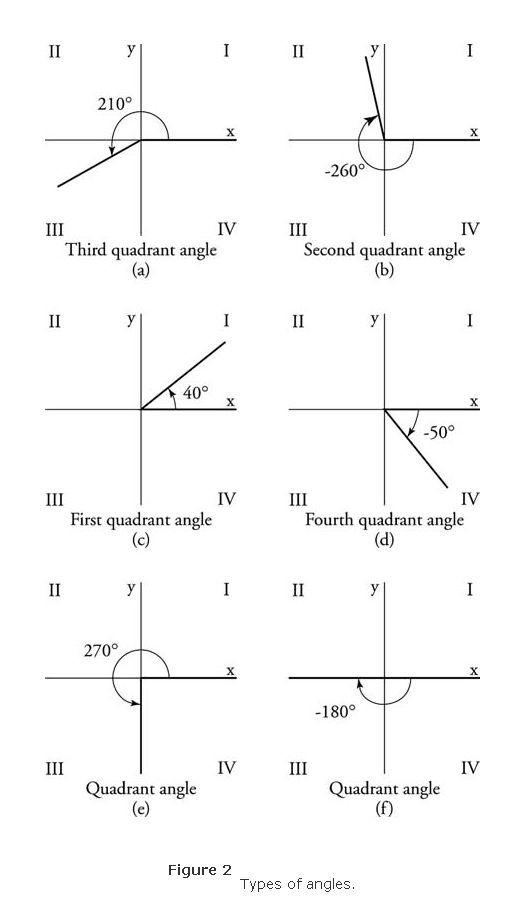
Example 1: The following angles (standard position) terminate in the listed quadrant.
|
94°
|
2nd quadrant
|
|
500°
|
2nd quadrant
|
|
−100°
|
3rd quadrant
|
|
180°
|
quadrantal
|
|
−300°
|
1st quadrant
|
Two angles in standard position that share a common terminal side are said to becoterminal. The angles in Figure 3 are all coterminal with an angle that measures 30°.
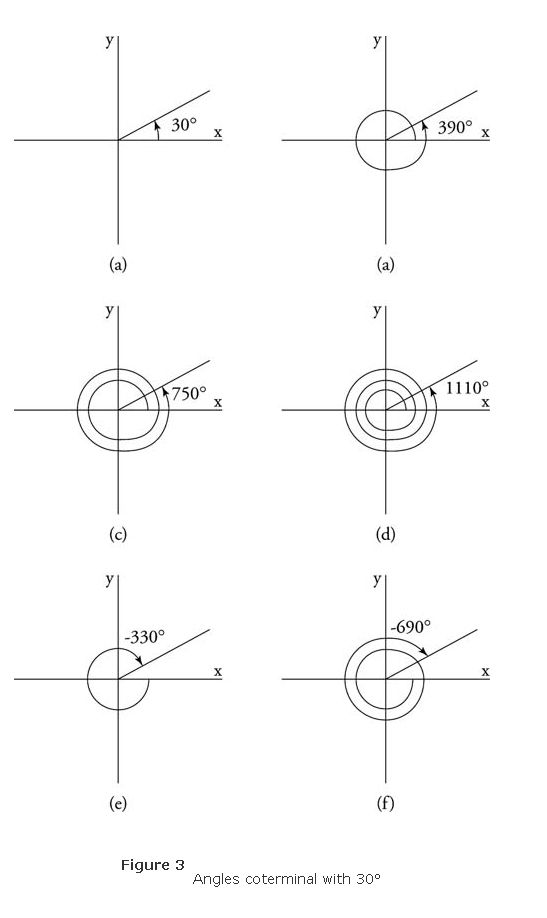
All angles that are coterminal with d° can be written as

where n is an integer (positive, negative, or zero).
Example 2: Is an angle measuring 200° coterminal with an angle measuring 940°?
If an angle measuring 940° and an angle measuring 200° were coterminal, then

Because 740 is not a multiple of 360, these angles are not coterminal.
Example 3: Name 5 angles that are coterminal with −70°.
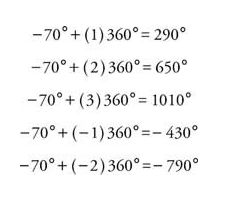
Angle measurements are not always whole numbers. Fractional degree measure can be expressed either as a decimal part of a degree, such as 34.25°, or by using standard divisions of a degree called minutes and seconds. The following relationships exist between degrees, minutes, and seconds:
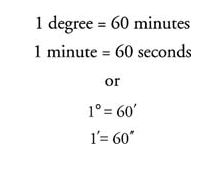
Example 4: Write 34°15′ using decimal degrees
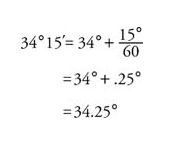
Example 5: Write 12°18′44″ using decimal degrees.
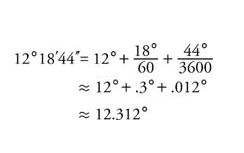
Example 6: Write 81.293° using degrees, minutes, and seconds.
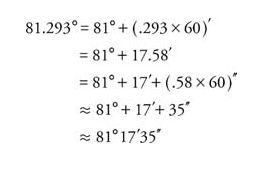
|
|
|
|
|
|
|
|
|
|
|
|
|
|
|
|
|
|
|
|
|
|